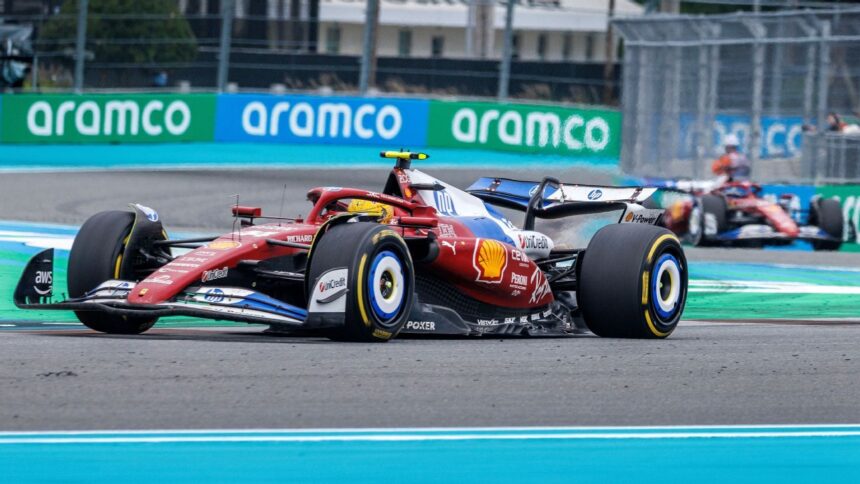From the moment Lewis Hamilton first got into the Ferrari, attention focused on every radio communication, strategic decision, and race result. The arrival of the most successful driver in Formula 1 history at the sport’s most famous team inevitably generated close scrutiny.
In his first race with the team in Australia, even simple messages about using a specific setting on the steering wheel went viral, even though Hamilton used “please” in his responses to his new race engineer. In the second race in China, the F1 world feed did not broadcast a message in which Hamilton offered to yield his position to Charles Leclerc. This deprived viewers of crucial context.
The Miami Grand Prix, marked by the heat and an unconvincing performance by Ferrari in 2025, generated controversy. A series of radio messages revealed the frustration after the checkered flag.
The Underlying Problem
Beyond the comments, Ferrari’s biggest problem in Miami was the lack of performance. The radio messages, questionable strategic decisions, and any frustration stemmed from uncompetitive lap times throughout the weekend. The race classification shows the magnitude of the situation: Leclerc finished seventh, 57 seconds behind the winner Oscar Piastri, and Hamilton eighth.
Instead of competing with Mercedes and Max Verstappen’s Red Bull for the podium, Ferrari struggled to defend against Carlos Sainz in the slower Williams. Alex Albon, in the other Williams, finished nine seconds ahead of Leclerc. For a team that was only 14 points behind McLaren, the previous year’s constructors’ champion, it was a harsh wake-up call.
Tensions rose as Leclerc and Hamilton shared the same track in the second half of the race. With different strategies, their races converged. Hamilton, on softer tires, was faster, but feared damaging his tires by following his teammate. Faced with this, Hamilton expressed his frustration over the team radio.
I’m burning my tires behind him.
Lewis Hamilton
The team’s response was cautious, concerned about a possible waste of time. Finally, Ferrari agreed to a change of positions on lap 38, but Hamilton was already showing impatience.
Image: Lewis Hamilton and Charles Leclerc
In the radio exchanges, Hamilton questioned the team’s decisions, even after the change was made. Leclerc, for his part, expressed his frustration with the situation.
After the race, the team principal, Frédéric Vasseur, met with Hamilton to explain the decisions. Vasseur emphasized the importance of clarity and trust between the team and the drivers.
Hamilton, for his part, downplayed the intensity of his radio messages, attributing them to the pressure and urgency on the track.
Vasseur explained that the delay in changing positions was due to the need to assess Hamilton’s advantage. The team principal downplayed the impact of the delay on the final result.
Image: Frédéric Vasseur, Ferrari team principal
Can Ferrari Change Course?
The situation at Ferrari highlights the importance of real-time communication in the sport. Leclerc and Hamilton agreed that the main problem is the lack of car performance. Ferrari is expected to introduce improvements for the next races. Hamilton suggested that problems with the car that have affected its performance are being investigated.







